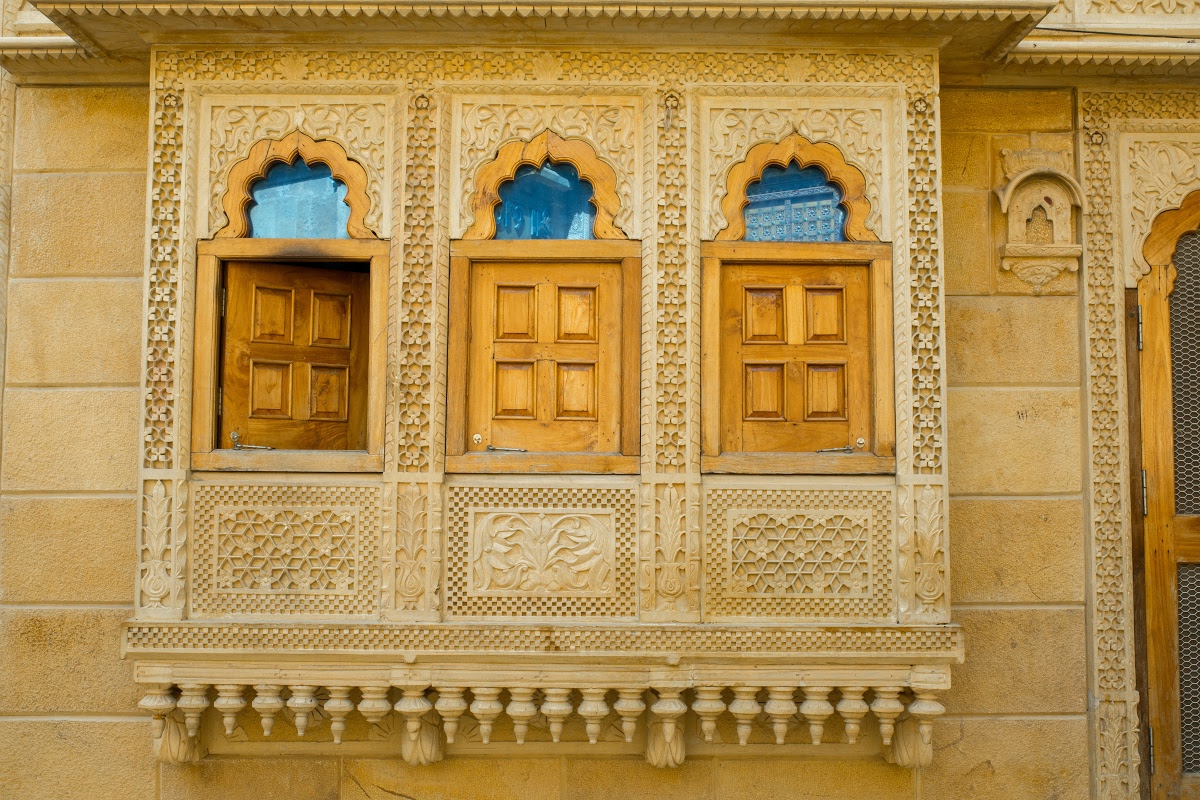Jaisalmer, the golden city of Rajasthan, is a treasure trove of architectural brilliance and artistic traditions. Among its many crafts, the art of stone carving stands out as a defining feature of the city’s heritage. Intricately carved facades, latticed windows, and ornate pillars are a testament to the skill and dedication of Jaisalmer’s artisans. As part of an Exotic & Rural Jaisalmer Tour, exploring this craftsmanship offers a deeper understanding of the city’s cultural and artistic legacy.
The Legacy of Stone Carving in Jaisalmer
A Tradition Rooted in History
Stone carving in Jaisalmer dates back to the 12th century when the city’s rulers commissioned grand forts, temples, and havelis. The yellow sandstone, locally known as “Jaisalmer stone,” became the primary medium for these artistic endeavors. This golden-hued stone, easily carved and highly durable, gives Jaisalmer its iconic glow.
Influences and Techniques
The art of stone carving in Jaisalmer has been influenced by Rajput, Mughal, and Jain architectural styles. Artisans employ traditional tools like chisels, hammers, and mallets to create intricate patterns and designs. Each carving tells a story, often depicting mythological tales, floral motifs, or geometric patterns.
Iconic Examples of Stone Carving in Jaisalmer
Jaisalmer Fort: A Living Canvas
The Jaisalmer Fort, also known as Sonar Quila, is a masterpiece of stone carving. Its walls, bastions, and gateways showcase the exquisite artistry of its creators. As you wander through the fort’s narrow lanes, you’ll encounter intricately carved temples, homes, and palaces that bring the fort’s history to life.
Highlights
- Jain Temples within the fort are adorned with delicate carvings depicting scenes from Jain mythology.
- The Raj Mahal, with its latticed windows and ornate balconies, is a stunning example of royal craftsmanship.
Havelis: Mansions of Elegance
Jaisalmer’s havelis are synonymous with architectural splendor. These grand mansions, built by wealthy merchants, are adorned with detailed carvings that reflect their status and taste.
Notable Havelis
- Patwon Ki Haveli: Known for its intricate façades and delicate stone filigree work.
- Salim Singh Ki Haveli: Famous for its peacock-shaped brackets and distinct architectural style.
- Nathmal Ki Haveli: A blend of Islamic and Rajputana designs, featuring carvings of flowers, elephants, and celestial beings.
The Artisans Behind the Craft
Generations of Skill
The stone carvers of Jaisalmer belong to families that have passed down their skills for generations. These artisans, often referred to as “Silavat,” continue to use traditional techniques to create masterpieces. Despite modern challenges, their dedication to preserving this ancient craft remains unwavering.
Supporting Local Artisans
Tourists can support these craftsmen by purchasing handcrafted items like carved stone panels, statues, and decorative pieces. Including visits to artisan workshops in your Exotic & Rural Jaisalmer Tour is a great way to appreciate their skill and contribute to their livelihood.
Stone Carving and Jaisalmer Camel Safari Tours
Connecting Culture and Adventure
Jaisalmer Camel Safari Tours not only offer an adventurous journey through the Thar Desert but also connect travelers to the region’s cultural heritage. Many safari routes include stops at rural villages where you can witness local artisans at work.
Highlights of Safari-Craft Experiences
- Visit to Khuri or Barna villages, known for their artisanal communities.
- Interaction with stone carvers to learn about their tools, techniques, and inspirations.
- Purchase unique souvenirs directly from the craftsmen, adding an authentic touch to your tour.
Modern Applications of Traditional Stone Carving
Beyond Monuments
While Jaisalmer’s stone carving is historically associated with grand structures, modern artisans are finding innovative ways to keep the craft alive. Today, their work extends to:
- Interior Design: Carved panels and jalis (latticed screens) are popular in luxury homes and hotels.
- Jewelry: Miniature carvings in stone are crafted into unique pendants and earrings.
- Decorative Items: Items like candleholders, coasters, and sculptures cater to contemporary tastes.
Challenges and Preservation Efforts
Despite its beauty, the art of stone carving faces challenges such as declining demand, competition from machine-made products, and a lack of younger artisans taking up the craft. Efforts by heritage organizations and tourism initiatives aim to preserve this tradition by promoting it through workshops, exhibitions, and tours.
Tips for Exploring Jaisalmer’s Stone Craftsmanship
- Hire a Guide: A knowledgeable guide can provide insights into the historical and cultural significance of the carvings.
- Visit Artisan Workshops: Witnessing the carving process firsthand adds a deeper appreciation for the craft.
- Buy Local: Support artisans by purchasing authentic handmade items instead of mass-produced replicas.
- Respect Heritage Sites: Avoid touching or damaging delicate carvings during your visits.
Conclusion
The craftsmanship of Jaisalmer’s stone carving is a profound expression of its cultural and artistic heritage. From the majestic Jaisalmer Fort to the intricate havelis and beyond, this art form continues to captivate travelers from around the world. Whether you’re exploring the city’s landmarks or venturing into rural areas on Jaisalmer Camel Safari Tours, the artistry of stone carving adds depth and beauty to your Exotic & Rural Jaisalmer Tour. Celebrate this timeless craft by experiencing it firsthand and supporting the artisans who keep it alive.

